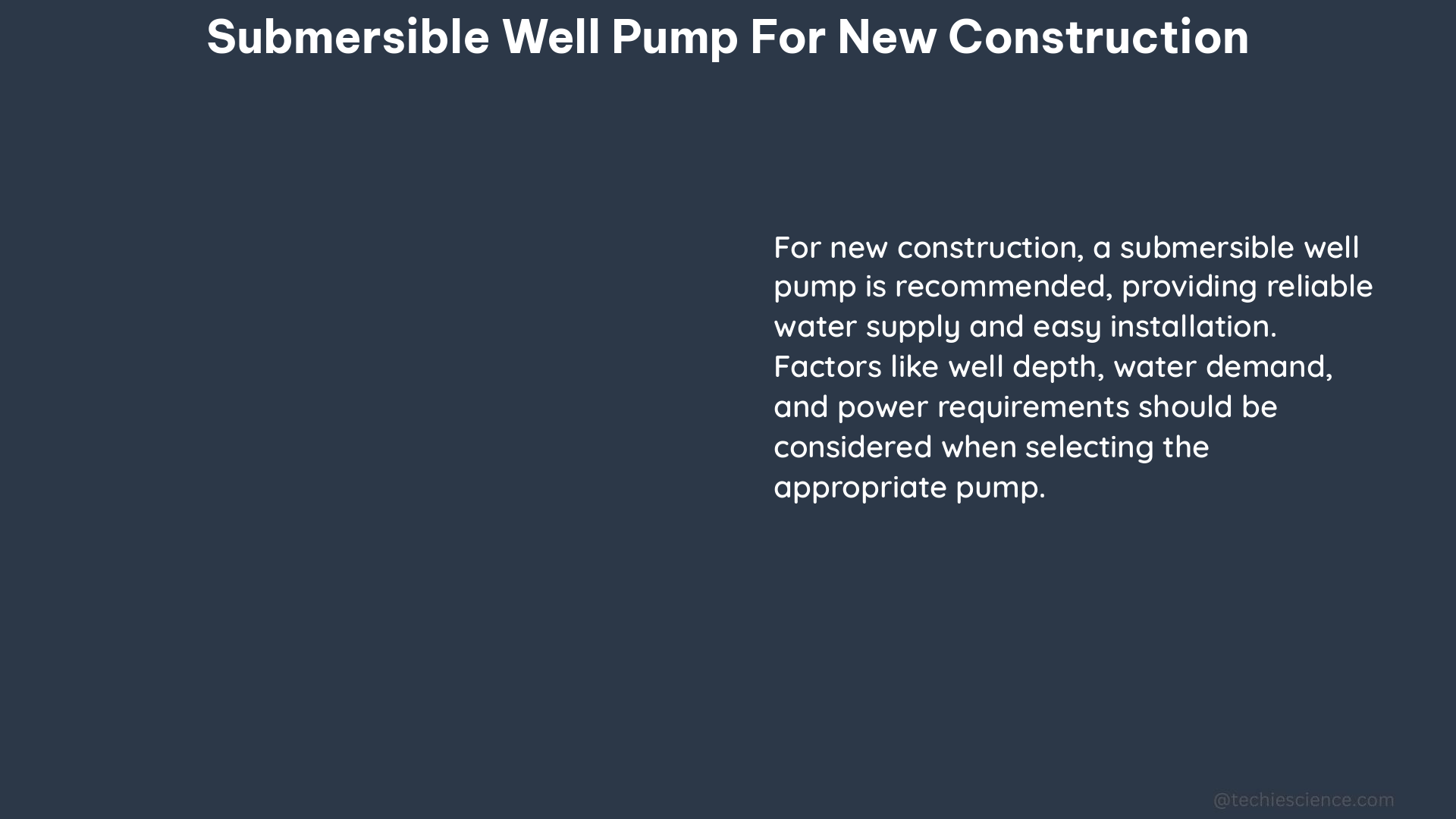When it comes to new construction, a submersible well pump can be an excellent choice for your water supply needs. These pumps are designed to be installed directly within the well, offering several advantages over other pump types, including higher efficiency, lower maintenance requirements, and the ability to handle deeper wells.
Understanding Submersible Well Pump Specifications
When selecting a submersible well pump for your new construction project, it’s crucial to consider the pump’s technical specifications. These include:
-
Flow Rate (GPM): The pump’s flow rate, measured in gallons per minute (GPM), determines the volume of water it can deliver. For a new construction with a well that produces 6 GPM at a depth of 220 feet, a submersible pump with a matching flow rate would be suitable.
-
Total Dynamic Head (TDH): The TDH is the total height the water must be lifted from the pump’s location to its final destination, including friction losses in the piping. This is an essential factor in determining the appropriate pump size.
-
Horsepower (HP): The pump’s horsepower rating determines the amount of power it can generate to lift the water. Selecting a pump with the right HP is crucial to ensure efficient operation.
-
Efficiency: The pump’s efficiency is a measure of how much of the energy consumed by the pump is actually used to lift the water. Submersible permanent magnet synchronous motor (PMSM) pumps have been shown to be more energy-efficient than traditional asynchronous squirrel cage motor (ASM) pumps, with potential energy savings of up to 5% in water collection systems.
Measuring Well Characteristics

Before installing a submersible well pump, it’s essential to measure the well’s characteristics, including:
-
Static Water Level (SWL): The SWL is the level of the water in the well when no water is being pumped. This information is crucial in determining the appropriate pump size and placement.
-
Drawdown: The drawdown is the difference between the SWL and the water level when the pump is operating. Knowing the drawdown helps ensure the pump is sized correctly to prevent it from running dry.
Selecting the Appropriate Pump Size
To determine the appropriate pump size, you’ll need to use the well’s TDH and the desired flow rate. The pump’s performance curve, provided by the manufacturer, will help you select the right pump that can deliver the desired flow rate at the well’s TDH.
Measuring Flow Rate
To measure the flow rate of a well pump, you can use a simple stopwatch method. Fill a 5-gallon bucket and time how long it takes to fill the bucket. The flow rate in GPM can then be calculated by dividing the bucket volume (5 gallons) by the time it took to fill the bucket.
Conclusion
Selecting the right submersible well pump for your new construction project is crucial to ensure a reliable and efficient water supply. By understanding the pump’s technical specifications, measuring the well’s characteristics, and using the pump’s performance curve, you can choose the perfect submersible well pump for your needs. Remember to also measure the flow rate to ensure the pump is delivering the desired output.
Reference:
– TerryLove Forums. (2010). New construction well pump recommendations? Retrieved from https://terrylove.com/forums/index.php?threads/new-construction-well-pump-recommendations.32435/
– Beck, M., Sperlich, A., Blank, R., Meyer, E., Binz, R., & Ernst, M. (2018). Increasing Energy Efficiency in Water Collection Systems by Submersible PMSM Well Pumps. Water, 10(10), 1310. doi:10.3390/w10101310
– RC West. (2019). How to Measure Your Well Pump GPM – YouTube. Retrieved from https://www.youtube.com/watch?v=5J1MaIyMSOQ

The lambdageeks.com Core SME Team is a group of experienced subject matter experts from diverse scientific and technical fields including Physics, Chemistry, Technology,Electronics & Electrical Engineering, Automotive, Mechanical Engineering. Our team collaborates to create high-quality, well-researched articles on a wide range of science and technology topics for the lambdageeks.com website.
All Our Senior SME are having more than 7 Years of experience in the respective fields . They are either Working Industry Professionals or assocaited With different Universities. Refer Our Authors Page to get to know About our Core SMEs.